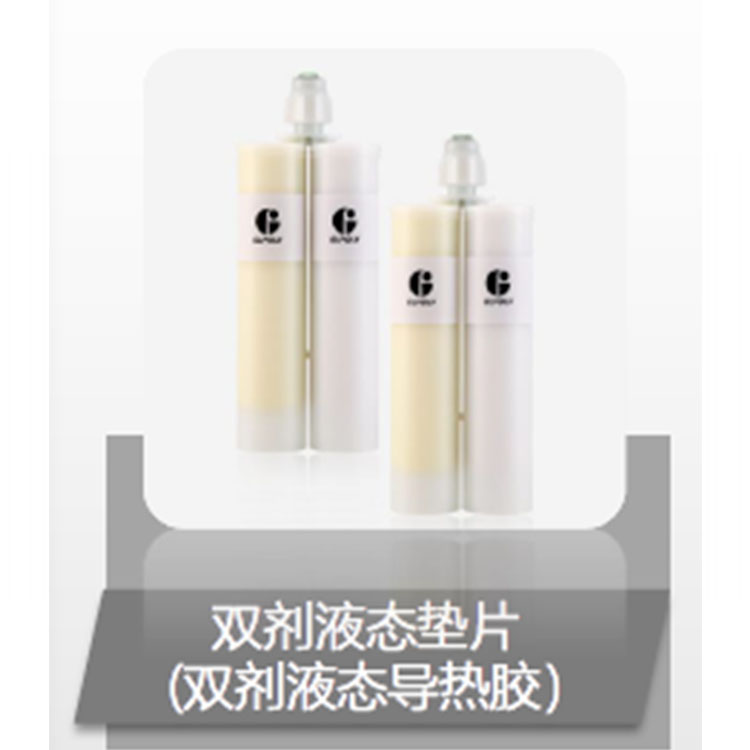

Hotline:0755-22277778
Tel:0755-22277778
Mobile:13826586185(Mr.Duan)
Fax:0755-22277776
E-mail:duanlian@xianjinyuan.cn
traditionThermal conductive materialMostly composed of metals, metal oxides, and other non-metallic materials such as graphite, carbon black, AlN, SiC, etc. With the advancement of science and technology and the development of industrial production, many special occasions such as aviation, aerospace, and electronic and electrical fields have put forward new requirements for thermal conductive materials, hoping that the materials have excellent comprehensive performance, which can provide safe and reliable heat dissipation for electronic components, as well as insulation and vibration reduction effects. Thermal conductive sealing adhesive precisely meets this requirement, and thermal conductive sealing adhesive is a typical representative among them.
Ordinary silicone rubberThe thermal conductivity is poor, usually only about 0.2W/m · K; Adding thermal conductive fillers can improve the thermal conductivity of silicone rubber. Common thermal conductive fillers include metal powders (such as Al, Ag, Cu, etc.), metal oxides (such as Al2O3, MgO, BeO, etc.), metal nitrides (such as SiN, AlN, BN, etc.), and non-metallic materials (such as SiC, graphite, carbon black, etc.). Compared with metal powders, although the thermal conductivity of metal oxides and metal nitrides is poor, they can ensure that silicone rubber has good electrical insulation performance.
Al2O3 is the most commonly used thermal conductive filler in metal oxides; Among metal nitrides, SiN and AlN are the most commonly used thermal conductive fillers. These thermal conductive fillers each have their own advantages and disadvantages. Metal and non-metal fillers have good thermal and electrical conductivity, while their compounds have high electrical insulation properties. The thermal conductivity of fillers is not only related to the material itself, but also closely related to the particle size distribution, morphology, interface contact, and degree of binding within the molecules of the thermal conductive fillers. Generally speaking, fibrous or foil shaped thermal conductive fillers have better thermal conductivity.
(1) Improve the thermal conductivity of thermal conductive sealant
Surface treatment of fillers can improve the compatibility between fillers and base adhesives, increase the filling amount, and significantly improve the thermal conductivity of potting adhesives. If using silane coupling agent KH-550 A-151、 The thermal conductivity of RTV thermal conductive silicone rubber filled with corundum powder surface treated with hexamethyldisilazane and dimethyldimethoxysilane can be increased by 2.10w/(m · K) from 1.16w/(m · K), and the thermal conductivity performance is nearly doubled.
(2) Refining and fibrosis of fillers
If the size of inorganic fillers is reduced to the nanometer level, their thermal conductivity will undergo a qualitative change due to changes in the atomic spacing and structure inside the particles. The thermal conductivity of conventional aluminum nitride (AlN) is about 36 W/(m · K), while that of nanoscale AlN is 320 W/(m · K). Pan Dahai et al. found that when the amount of silicon nitride (SiN) with a particle size of 5-20 μ m is 150-250 parts (with a matrix of 100 parts), the thermal conductivity of RTV silicone rubber is 0.9W/(m · K), and its physical and processing properties are good. The influence of spherical, sheet-like, and fibrous fillers of the same type and dosage on the thermal conductivity of silicone rubber varies, with whiskers being the most effective in improving the thermal conductivity of silicone rubber; Spherical is the worst. J. Ma et al. found that adding carbon fibers of various sizes to traditional Al2O3 increased thermal conductivity by approximately 6 times. According to the model proposed by Y. Agari et al., the thermal conductivity is highest when the conductive block formed by filler aggregation is parallel to the polymer conductive block in the direction of heat flow. Therefore, manufacturing highly oriented fillers can greatly improve the thermal conductivity of silicone rubber. The carbon fiber K1100 produced by AMOCO in the United States has an axial thermal conductivity of up to 1100W/(m · K), coupled with its negative coefficient of thermal expansion, high modulus, and low density, making it particularly suitable for making composite materials with high thermal conductivity, dimensional stability, or thermal expansion coefficient matching.
(3) Combine fillers with different particle size distributions
The thermal conductivity of fillers is closely related to their particle size ratio. When a uniformly sized particle is stacked in some form and another particle of a different size is added to the gaps, the filler particles can be tightly packed together to form a thermal conductivity pathway. When a special process is used to form an isolated distribution state between the thermal conductive fillers, even a small amount can endow the composite material with high thermal conductivity. Xie Zemin et al. filled silicone rubber with different particle sizes of α A12O3 and SiC. When the total amount of filler was 55 parts, the silicone rubber had lower viscosity, and the thermal conductivity of the vulcanized silicone rubber material could reach 1.48W/(m · K).
(4) Improve processing technology
decisionThermal insulation sealantAnother major factor in thermal conductivity is the processing technology of the thermal conductive sealant manufacturer. The temperature, pressure, feeding sequence of fillers and various additives during the molding process of composite materials can also have a significant impact on the thermal conductivity of the material, such as the thermal conductivity of thermosetting silicone rubber being mostly higher than that of RTV silicone rubber. On the one hand, this is because RTV silicone rubber requires good process performance, so the viscosity of the rubber material cannot be too high, and therefore too much thermal conductive filler cannot be added; On the other hand, the lower density of RTV silicone rubber compared to thermosetting silicone rubber also affects its thermal conductivity. Therefore, by optimizing the type and amount of fillers, as well as the ratio of fillers to other additives, silicone rubber with high thermal conductivity and superior comprehensive performance can be obtained.


Advanced Institute (Shenzhen) Technology Co., Ltd, © two thousand and twenty-onewww.avanzado.cn. All rights reservedGuangdong ICP No. 2021051947-1 © two thousand and twenty-onewww.xianjinyuan.cn. All rights reservedGuangdong ICP No. 2021051947-2